Explore the Best AI Image Gallery
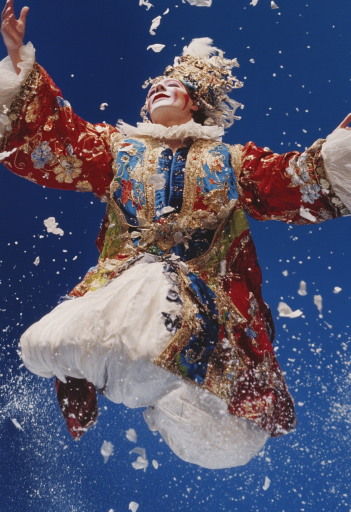
Redefining Design: The Intricate Role of AI in Graphic Design
Artificial Intelligence (AI) is reshaping various sectors, and graphic design is no exception. Designers are increasingly utilizing AI tools to enhance their creativity, improve efficiency, and unlock new possibilities in their work. This blog post examines how AI is influencing the graphic design landscape, its current applications, ethical considerations, and the emerging trends that are set to define the future of design.
The Impact of AI on the Creative Industry
AI's integration into graphic design is fostering a new synergy between technology and creativity. Designers are using AI to automate repetitive tasks such as resizing images, generating layouts, and even suggesting color palettes. This automation not only saves time but also allows designers to focus on more complex and creative aspects of their work.
Moreover, AI can analyze large datasets to generate insights about design trends, audience preferences, and market demands. Tools like Adobe Sensei harness the power of machine learning to give designers suggestions, streamline workflows, and even predict the success of design elements based on historical data.
Potential Uses of AI in Graphic Design
AI offers varied applications within graphic design, allowing professionals to explore innovative strategies. Some notable uses include:
- Design Generation: AI can create hundreds of design variations in a matter of minutes. Systems like DeepArt and Runway ML utilize neural networks to generate unique images based on input parameters.
- Personalization: AI-driven tools help create tailored designs for specific target audiences by analyzing user behavior and preferences. This can lead to more effective marketing materials.
- Prototype Development: AI can assist in generating rapid prototypes, allowing designers to test concepts quickly without investing extensive time in manual designs.
- Brand Consistency: AI systems can ensure that designs remain consistent with branding guidelines by analyzing logos, fonts, and color schemes across different applications.
Ethical Considerations
The integration of AI in graphic design raises several ethical considerations that demand attention. As AI tools become more capable of creating increasingly sophisticated content, questions surrounding authorship and originality arise. For instance, when an AI generates a piece of artwork based on a designer's input, who holds the rights to that creation? This ambiguity can complicate copyright laws and ownership rights.
Moreover, reliance on AI for design can lead to a homogenization of creative works, as many designers may end up using similar templates and tools, potentially stunting the individuality that characterizes artistic expression. The fear of losing the human touch in design is palpable, as AI can sometimes be seen as a substitute rather than a complement to human creativity.
Future Trends in AI and Graphic Design
The future of AI in graphic design looks promising, with several exciting trends on the horizon:
- Collaboration between AI and Designers: As AI evolves, it is likely that designers will increasingly adopt a collaborative approach. By leveraging AI to enhance creativity, designers can push the boundaries of what’s possible, using AI as a co-creator rather than a standalone entity.
- Improved User Experience: Enhanced AI tools are expected to offer smarter and more intuitive design interfaces, allowing designers to work with greater flexibility and insight.
- Sustainability in Design: AI may play a crucial role in promoting sustainable practices in design. By using AI algorithms to optimize materials and processes, designers can reduce waste and environmental impact.
- Emergence of AI-Generated Art: As AI continues to develop, we may witness the rise of entirely AI-generated artworks that challenge traditional notions of creativity and authorship.
Conclusion
AI is undeniably redefining the graphic design landscape. While it presents various opportunities for efficiency and creativity, it also brings ethical challenges and questions about originality. The way forward lies in striking a balance between leveraging AI's potential and preserving the human element essential to the creative process. As designers embrace this technological revolution, they will shape a future where humans and machines collaborate, fostering an environment ripe for innovation and creativity.
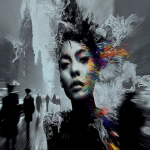


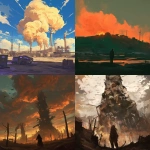



](https://images.ai-img.art/thumbnails/150/ff09e32d2be011c0dd785984c5c1e47839ce551a31da1bde242860b30df2aa30.webp)











](https://images.ai-img.art/thumbnails/150/7cf5a08238f29c821f52bb4f63db48af0b7f633ff3b9f7253074d78ced9ff6f6.webp)

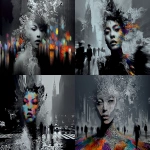


](https://images.ai-img.art/thumbnails/150/685ae68cfab93a7e59a71206867b060c45bd6fd3cd561c4fe60fca514b09c5f8.webp)








](https://images.ai-img.art/thumbnails/150/0ba0be922ab76af53f75ab90126ae2b18a600ee3b96941e8ab897a9f10594e5a.webp)



](https://images.ai-img.art/thumbnails/150/2ebdeb4f7db35100e5be5de9bc3e533a40d14e5feedefd7ffc586524a0f3ba8c.webp)
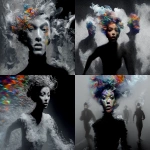
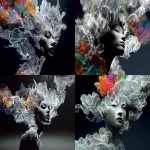



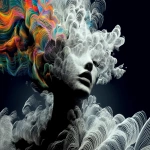
](https://images.ai-img.art/thumbnails/150/847809c77ca9a73b68bc190e6efb06fec87157685a243730d5a66a403b0e6e10.webp)


](https://images.ai-img.art/thumbnails/150/a3ed6513a6661aa3ee46e0c2924d1e8888854e91d8908de39db5590dc41f8d8f.webp)
](https://images.ai-img.art/thumbnails/150/bd056a4718c27444e064198762f8dc8ffa1f74f1afd7dcda8d5cb8b142797d6e.webp)
